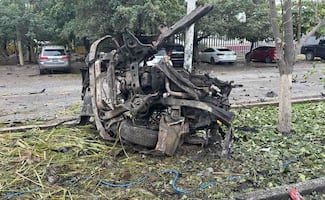Mexico’s Ministry for Agrarian, Land and Urban Development (SEDATU) did not enumerate the inhabitants of 47.6% of municipalities that declared a state of emergency after the earthquakes of September 7 and 19, 2017 , according to a report issued by the Federal Superior Auditors (ASF) .
According to the federal institution, there were 11 state of emergency declarations for natural disasters and six extraordinary emergency appeals, which encompassed the protection of 720 municipalities in nine states .
However, in order to create a database with data of people who had been left without homes and needed financial support for reconstruction, SEDATU only gathered information in 370 municipalities and seven delegations in Mexico City , which represented a coverage of barely 52.4% in the affected areas.
A total of 343 municipalities were left out of the census: 258 in Oaxaca, 40 in Tlaxcala, 30 in Chiapas, six in Puebla, and 11 delegations in Mexico City . In the states of Morelos, Guerrero, the State of Mexico, and Veracruz , the census reached 100% of the affected municipalities, but the six municipalities in Veracruz did not receive support.
According to the ASF, based on data issued by the National Institute of Statistics and Geography (INEGI) , there were at least 2.4 million houses and 8.7 million people affected by the earthquakes , but for some reason, they were left out of the census and thus were not taken into consideration to receive financial support for the reconstruction and rehabilitation of their households.
When asked for a reason why not all municipalities in a state of emergency had received the proper support, SEDATU claimed that “it did not have the operational capacity to address the situation in terms of data collection,” and that due to the magnitude of the damages, their capacities were exceeded .
The ministry also claimed that within the municipalities that were not part of the census, many homeless people refused to give out their information, though they were unable to prove said statement.
According to INEGI , there are at least 17.8 million people living in 4.6 million households that were affected by the earthquakes in the country. However, SEDATU only registered 172,026 households , which is only 3.7% of the total.
In order to address damages caused by the earthquakes in all 370 municipalities and seven delegations in Mexico City, the federal government used 29,694.7 million pesos from the Natural Disasters Fund (FONDEN) out of which only 8,917.4 million were used for the reconstruction of houses .
“Duplicated” houses
Not only were several municipalities left out of the census. The Federal Superior Auditors also detected thousands of seemingly duplicated houses in SEDATU’s records , which are comprised of three different databases.
In the first database , created with preliminary information on November 2017 , the Auditors found 86,660 duplicated records out of a total of 172,026 records, whereas in the second database , which was created with final information, the ASF found duplicity in 46,721 cases .
The third database registered 184,401 people who were left without a home . The database was delivered to BANSEFI for the delivery of financial assistance, but there were at least 57,984 duplicated records .
Out of the total, in 46,719 of cases, there were houses with the same coordinates, and 44,506 of them showed repeated addresses , which “showed a serious lack of reliable data for the registration of beneficiaries,” stated the ASF.
EL UNIVERSAL
asked SEDATU for a statement regarding the anomalies, but there was no response from the government body. Elpidio Concha Arellano, federal delegate of SEDATU in the state of Oaxaca , conceded that not all municipalities in said state had been taken into account after the September 2017 earthquakes.
One of the reasons for said exclusion, he claimed, was that both state and federal governments agreed to prioritize financial support for all 41 municipalities that comprise the Isthmus of Tehuantepec , where the greatest damage occurred.
Regarding the record duplicity, the delegate from Oaxaca claimed that there were many people with the same names and last names –with at least 488 cases in the Isthmus . Additionally, some households were reported with partial damage, but were then reclassified with total damage.
Allegedly, this was the reason why two types of financial aid were given to people affected. In Oaxaca, there were between 3,500 and 4,000 cases .
The delegate assured that there were no irregularities regarding money management.
dm
Noticias según tus intereses
[Publicidad]
[Publicidad]















